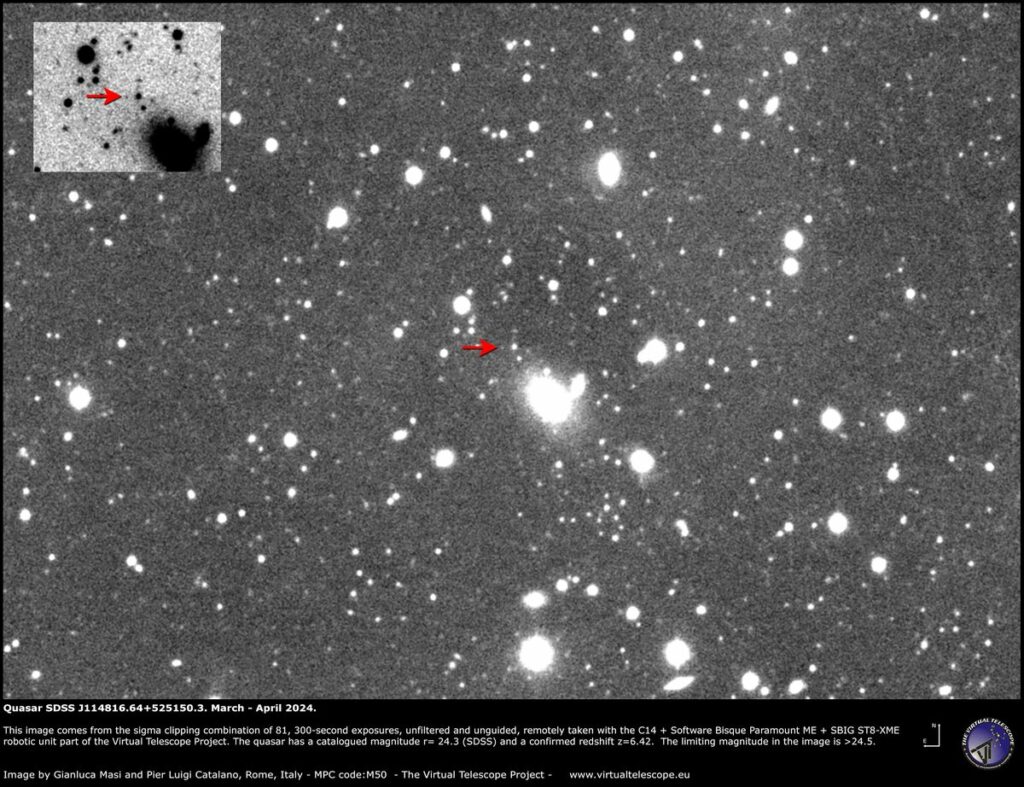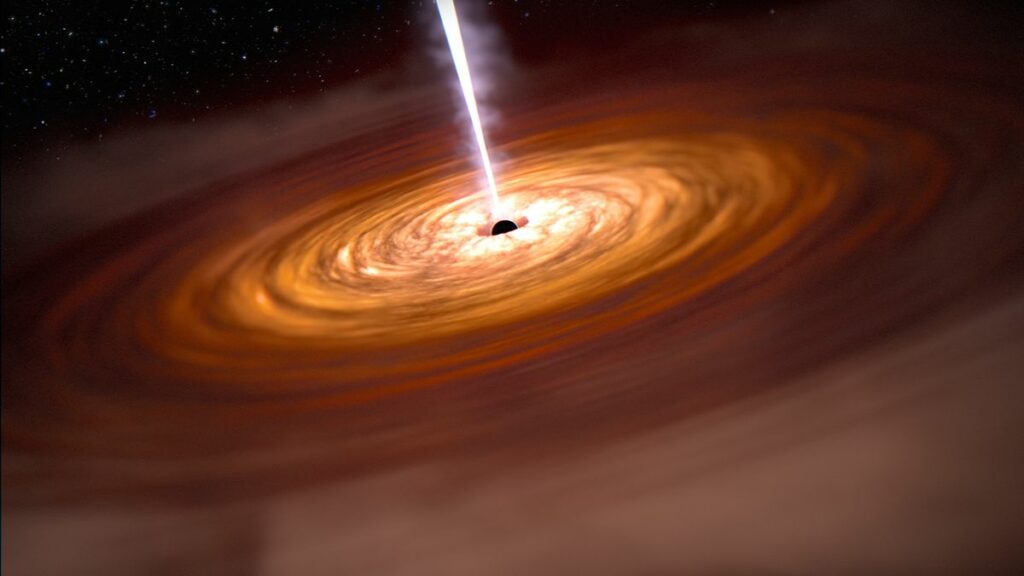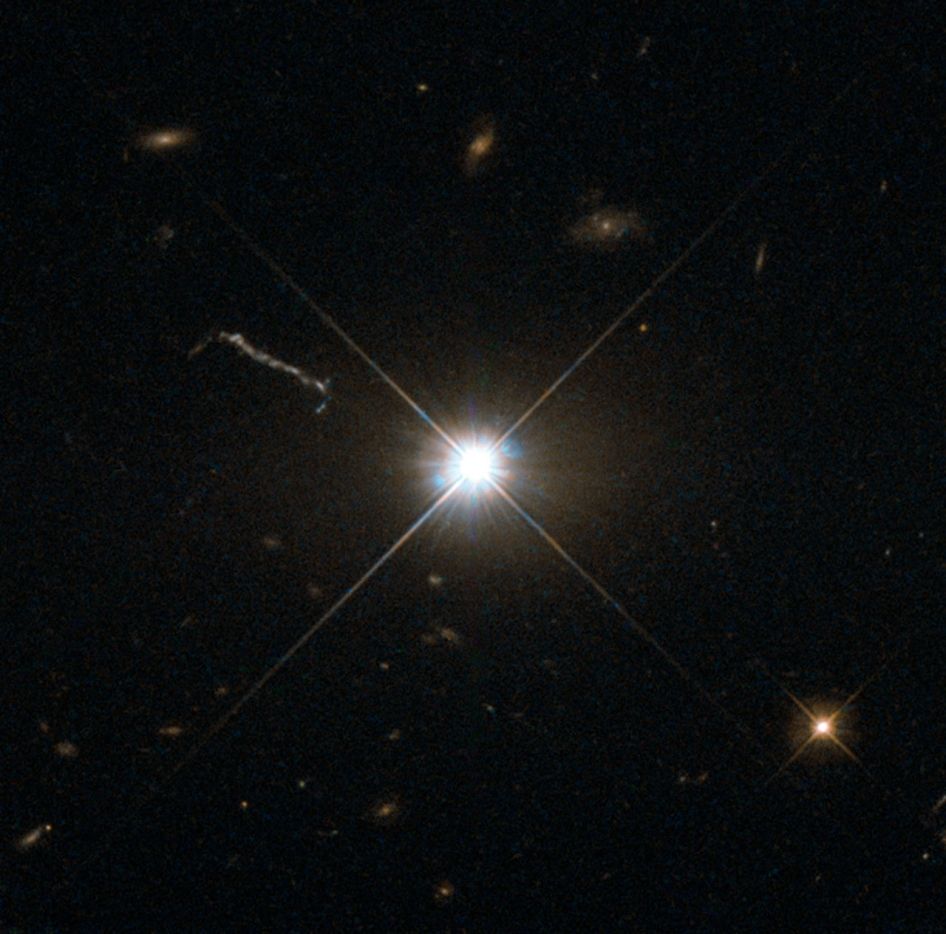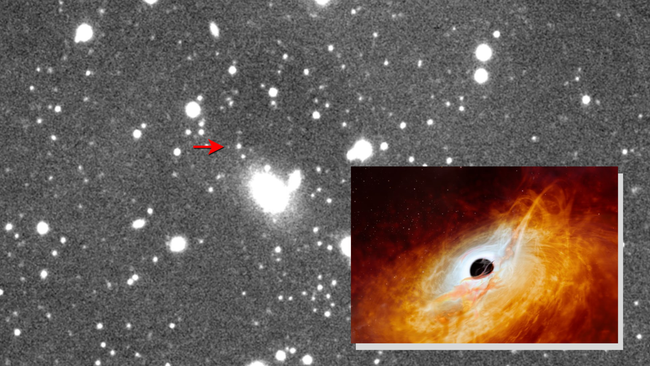“This is a record result.”
Astronomers have captured an image of a quasar powered by a feeding black hole at the edge of the universe, appearing less than 1 billion years after the Big Bang.
The quasar, known as SDSS J114816.64+525150.3, is fueled by a supermassive black hole with a mass over 3 billion times that of the sun, situated in the Ursa Major constellation.
The Virtual Telescope Project in Italy utilized a 356 mm (14-inch) aperture robotic unit to image this quasar, marking a significant achievement in astronomical observation.
According to Gianluca Masi, the founder of the Virtual Telescope Project, this observation is groundbreaking as it delves into a time when the universe was less than 900 million years old, nearly 12.9 billion years ago.
SDSS J114816.64+525150.3 is considered the most distant visible celestial object in the northern sky that can be seen in visible light, as noted by the astronomer.
While SDSS J114816.64+525150.3 was once the most distant quasar discovered, subsequent findings have identified 8 quasars located even further away, with P172+18 being the most distant at 13.02 billion light years.
The key distinction lies in the fact that P172+18 and other more distant quasars were detected in radio and ultraviolet to near-infrared light, invisible to the human eye, whereas SDSS J114816.64+525150.3 was observed in visible light.

Quasars may be the brightest objects in the universe, but spotting them in visible light is a big deal
SDSS J114816.64+525150.3, similar to all quasars, derives its luminosity and its position as the most energetic entity in the sky from the massive compact object residing at its core: a supermassive black hole that voraciously devours matter from its immediate surroundings.
These black holes can possess masses millions or even billions of times greater than that of the sun. As they ingest gas and dust from an accretion disk, their intense gravitational pull creates significant tidal forces within the disk. This process heats the gas and dust in the accretion disk to extreme temperatures, causing it to emit bright light across the electromagnetic spectrum.
Furthermore, material not consumed by the cosmic giant is directed to its poles by strong magnetic fields. Subsequently, this material is expelled as jets traveling at velocities close to the speed of light. These jets are accompanied by intense electromagnetic emissions.
Collectively, these regions (also referred to as active galactic nuclei (AGNs)) are often brighter than the combined light of all stars in the entire galaxy surrounding them. However, even when located billions of light-years away, these formidable celestial objects remain challenging to observe. For example, despite the brightness and power of SDSS J114816.64+525150.3, the north star Polaris is still a billion times brighter when viewed from Earth’s perspective in the night sky.

Observing an object from such a distant point in time using visible light proves to be quite challenging. This difficulty arises from the phenomenon of redshift, where light, or electromagnetic radiation, shifts towards the infrared portion of the electromagnetic spectrum as it travels through space. The farther the light travels, the more pronounced this redshift becomes.

The expansion of the universe leads to a phenomenon known as redshift, where electromagnetic radiation shifts towards the red end of the spectrum as the source moves farther away. Masi highlighted this cosmological effect, emphasizing that the quasar under observation exhibits an extreme redshift, with the majority of its light falling into the infrared range, making it nearly invisible in the visible domain.
The discovery of this distant quasar showcases the effectiveness of the Virtual Telescope Project, which was established in 2006 and operates robotic telescopes remotely. The project has successfully captured various celestial events such as comets, supernovas, eclipses, and meteor showers, sharing these images with a global audience. However, the observation of SDSS J114816.64+525150.3 stands out as one of the project’s most remarkable accomplishments.
Masi concluded by expressing pride in the Virtual Telescope Project’s ability to capture images of the most remote celestial body in the northern sky observable in visible light, located at the edge of the universe. This achievement underscores the importance of continued astronomical research and exploration facilitated by advanced technology and dedicated scientists.
Do not forget to share your opinion with us to provide you with the best posts !





0 Comments